<< Previous | Displaying results 5291-5300 of 6772 for "" | Next >>
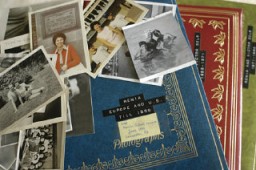
Waitstill and Martha Sharp supervise the arrival of 14 tons of milk products to distribute to children in the region. Pau, France, August 1940.
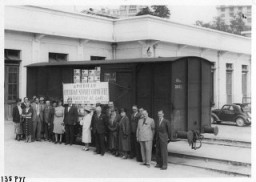
Studio portrait of Martha Sharp. Martha and Waitstill Sharp, American Unitarian aide workers, helped thousands of Jews, intellectuals, and children in Prague, Lisbon, and southern France in 1939–1940.
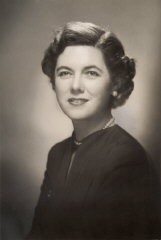
Mugshot of Colonel Joachim Peiper, defendant in the Malmedy atrocity trial. He was sentenced to death by hanging. Photograph taken ca. 1946.
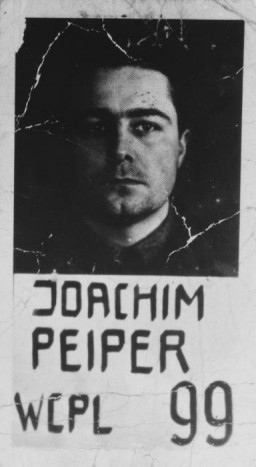
Bodies of US soldiers killed by Waffen SS troops during the Malmedy Massacre on December 17, 1944. Photograph taken in January 1945.
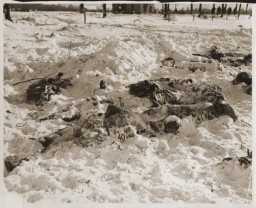
Shlamke and Shanke Minuskin pose with their baby son, Henikel, in the garden of their home. Zhetel, Poland, 1938.
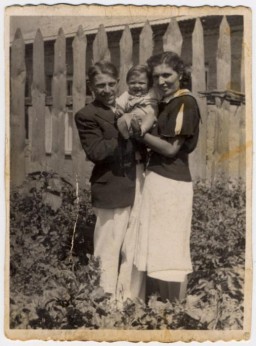
Civilians flee Warsaw following the German invasion of Poland. Hundreds of thousands of both Jewish refugees and non-Jewish refugees fled the advancing German army into eastern Poland, hoping that the Polish army would halt the German advance in the west. Many of the refugees fled without a specific destination in mind. They traveled on foot or by any available transport—cars, bicycles, carts, or trucks—clogging roads to the east. Most took only what they could carry.

Zsofi Brunn and members of her family were deported from Hungary to Auschwitz-Birkenau in June 1944. Her husband and mother were killed upon arrival. Zsofi and her daughter Anna were transferred to a labor camp in Czechosovakia. They were eventually liberated by Soviet forces in May 1945. Zsofi and Anna returned to Hungary. They moved to Rakosszentmihaly, near Budapest. There, Anna finished high school, and Zsofi directed a Jewish orphanage. This photo shows Zsofi (back row, center) posing with the…
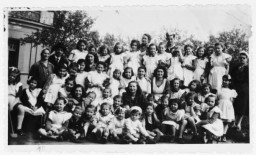
Henry Morgenthau, Jr., testifies before the Senate Foreign Relations Commission in support of the Lend-Lease bill to aid Britain. Morgenthau was secretary of the treasury under President Franklin D. Roosevelt. Lend-Lease was the name of the US policy of extending material aid to the Allies before and after the United States entered World War II.
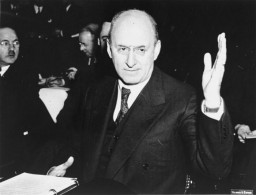
“For three months I was disguised as a man, and very successfully… I passed my mother several times … she never recognized me.” Frieda Belinfante, a half-Jewish lesbian, used this disguise to hide from Nazi authorities. In a later interview she said, “I really looked pretty good.” Her involvement in the resistance movement included planning the destruction of the Amsterdam Population Registry in March 1943, falsifying identity cards, and arranging hiding places for those who were sought by…
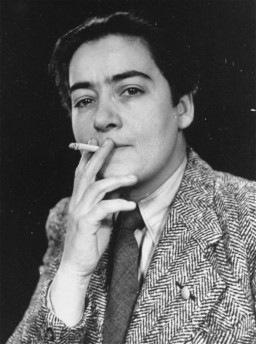
We would like to thank Crown Family Philanthropies, Abe and Ida Cooper Foundation, the Claims Conference, EVZ, and BMF for supporting the ongoing work to create content and resources for the Holocaust Encyclopedia. View the list of donor acknowledgement.